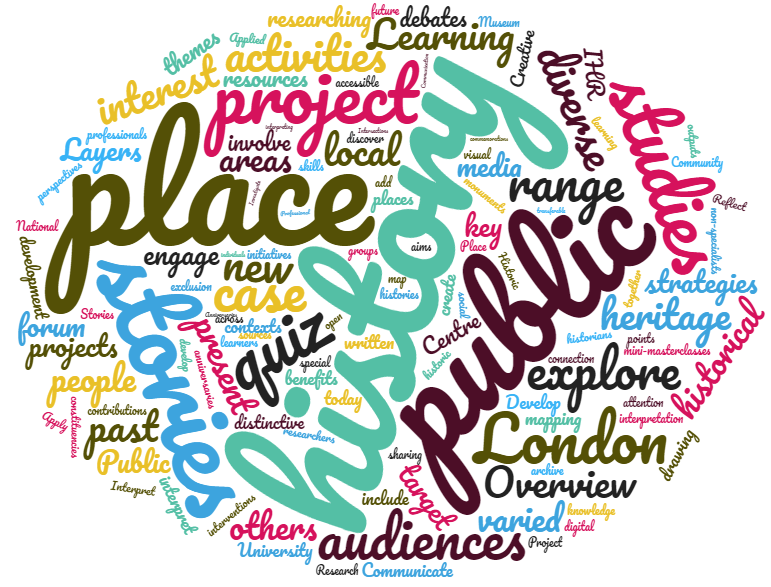By Catherine Clarke
In this post Professor Catherine Clarke introduces the IHR’s new MOOC (Massive Open Online Course) in Applied Public History, which is now available. Who’s it for, why should you get involved, and what did Catherine and the many people involved learn from the MOOC’s design and creation?
On Monday 12 October 2020, the IHR launches its first ever MOOC – a free Massive Open Online Course – with University of London WorldWide, on the Coursera platform. Led by the IHR’s Centre for the History of People, Place and Community, the course introduces learners to applied public history: understanding and interpreting the past today, and engaging diverse communities in the practice of making and sharing histories.
The course draws on project case studies, expert insights and diverse perspectives to model exciting approaches to researching and sharing the history of places and people. It features the unique, diverse projects and expertise based in the Centre, including the Victoria County History of England (founded 1899), and the Layers of London crowdsourced digital history project, as well as contributions from the Centre’s collaborators and partners across academia, the heritage sector and creative industries throughout the UK. Across six weeks, learners will develop a toolkit to apply in their own practice, by participating in discussion, quizzes, creative activities and mini masterclasses. The course is available ‘on demand’, meaning that learners can start whenever it suits them.
The MOOC is for anyone with an interest in history, and we hope it will be especially useful for history students and academics seeking to develop skills in public engagement, heritage professionals and volunteers, history teachers and educators, community groups and local history societies, all those looking for a Continuing Professional Development opportunity in this area, and anyone who’s passionate about discovering and sharing stories from the past.

So, what’s the MOOC about, and what could it offer historians and others seeking to develop their practice in public and applied Humanities? And what did we learn from the experience of putting the MOOC together – and, in particular, the challenges of creating a skills-based, collaborative learning experience within a knowledge-centred learning platform? What were the highlights and challenges – and would we do it again?
Our aim from the start was for the MOOC to create an online community, where participants could share public history experiences, insights and tips. We wanted the course to be grounded in collaboration and discussion, with the other participants bringing as much expertise and value as the formal course instructors. We began, significantly, with a series of questions for the MOOC, rather than a set of knowledge content we wanted learners to acquire. What kinds of stories can we discover through research into the history of places and people? How do we engage diverse communities with those stories today? What kinds of imaginative approaches can we use to interpret the past? And what tools and opportunities can we create to include new groups and individuals in local research initiatives?
With the support of the University of London WorldWide MOOC team, and training from the Bloomsbury Learning Exchange, we set about devising a course programme which could allow learners to explore these questions together. At the suggestion of the WorldWide team, we used ABC Learning Design to storyboard the course, and had fun juggling coloured cards to ensure we included a variety of learning types (from Acquisition and Investigation to Collaboration and Production), matched to outcomes. But then mapping this onto the content categories in the Coursera platform proved tricky – working within the set MOOC structures and mechanisms wasn’t always easy, and we had to re-think some of our content and design.
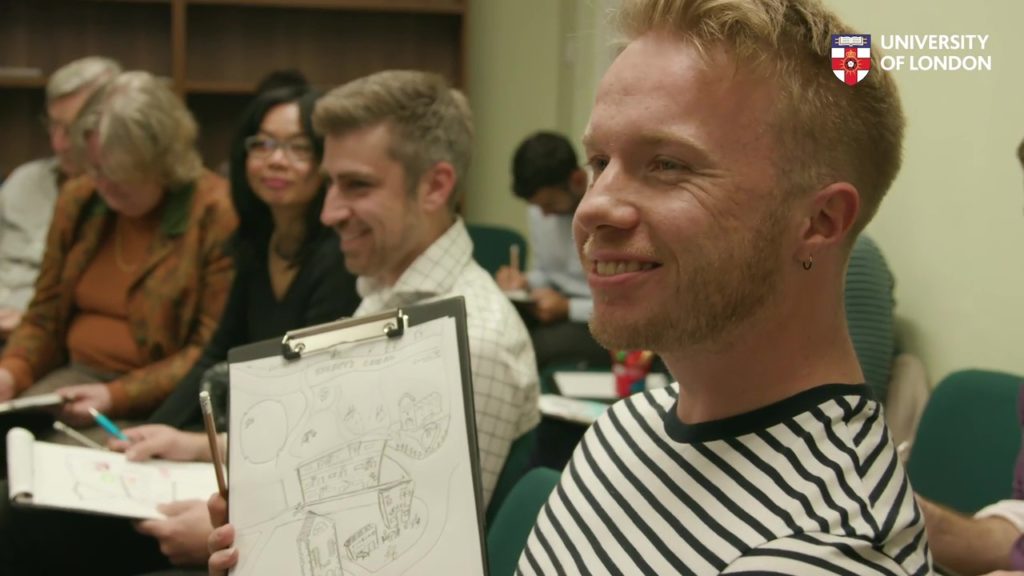
Working within the Coursera platform framework presented a real challenge – but also a fascinating opportunity to reflect on different modes of teaching and learning, and to think creatively about how to deliver the course we wanted. The MOOC structure is very much geared towards content and knowledge-based learning, while we wanted to develop skills and capacity. The typical MOOC model is also very much about top-down pedagogy or one-way knowledge transfer – we wanted to create a space for exchange and collaboration.
We worked creatively with formats such as quizzes, discussion forums and peer reviews, and built in opportunities for hands-on practice, such as making a creative map (in a masterclass with artist Tom Woolley), writing an object caption, or designing a commemorative item to mark an anniversary. We’re continuing to reflect on the dovetailing between a skills-based course and the Coursera MOOC platform – our Teaching Assistant Dr Steven Franklin will be gathering further insights as the course begins, and we hope to share our ideas in a future publication.

One of the other ways we tried shape the ethos of the course was through filmed content. Rather than traditional lectures, the videos are interviews and informal discussions – even an exhibition launch and a creative workshop. We were lucky enough to be able to feature some inspirational public historians and projects, from the Runnymede Trust’s Our Migration Story to Youth Club Archive, local Victoria County History volunteers in Leicestershire, oral histories with Syrian refugees, and the #RememberHer project to commemorate women in London. It was also exciting to delve into the IHR Library and explore some fascinating materials on film. Many new skills were learned, from reading autocues to camera-friendly dressing (no stripes!). We have no plans to release our blooper reel, including such gems as a video on cartography in which Catherine accidentally introduces former IHR Librarian ‘Map Shaw, with old matts in the IHR Wohl Library’…
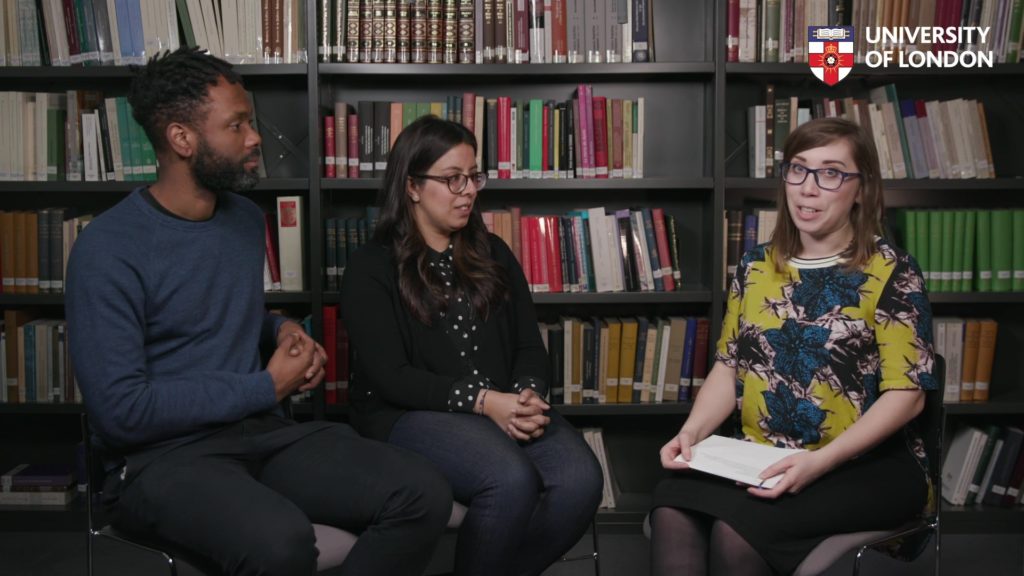
This blog post is an opportunity to thank all those who helped develop the course, especially Seif El Rashidi (Project Manager, Layers of London) and Hannah Elias (now at Goldsmiths), with support from Olwen Myhill (IHR) and Mehrunnisa Yusuf (University of London WorldWide). Enormous thanks to all those who shared their expertise and showcased their amazing projects. Please take a look at the course – we hope you’ll join our online community.
Applied Public History: People, Places, Stories – a preview
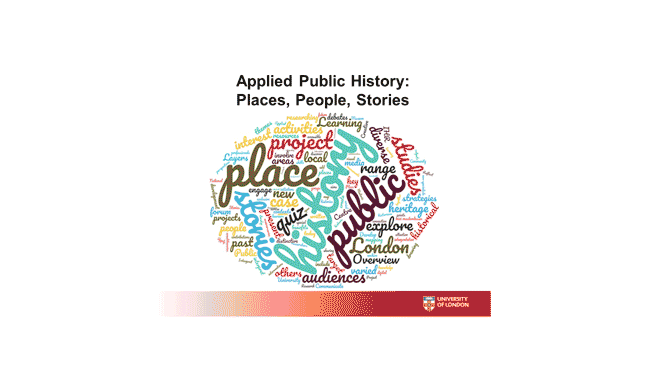
***
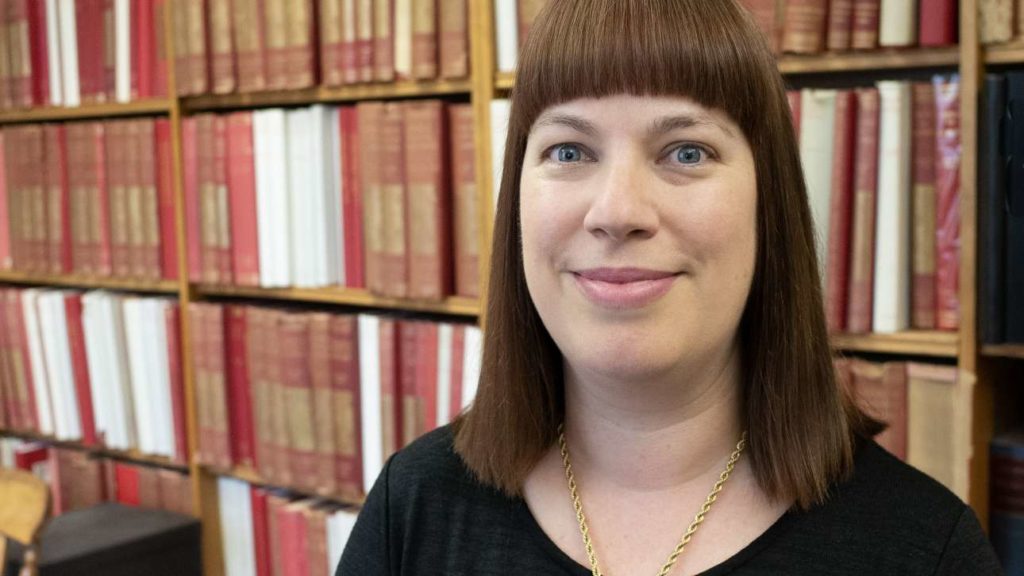
Professor Catherine Clarke is Director of the Centre for the History of People, Place and Community at the IHR, and Professor of History at the University of London.

